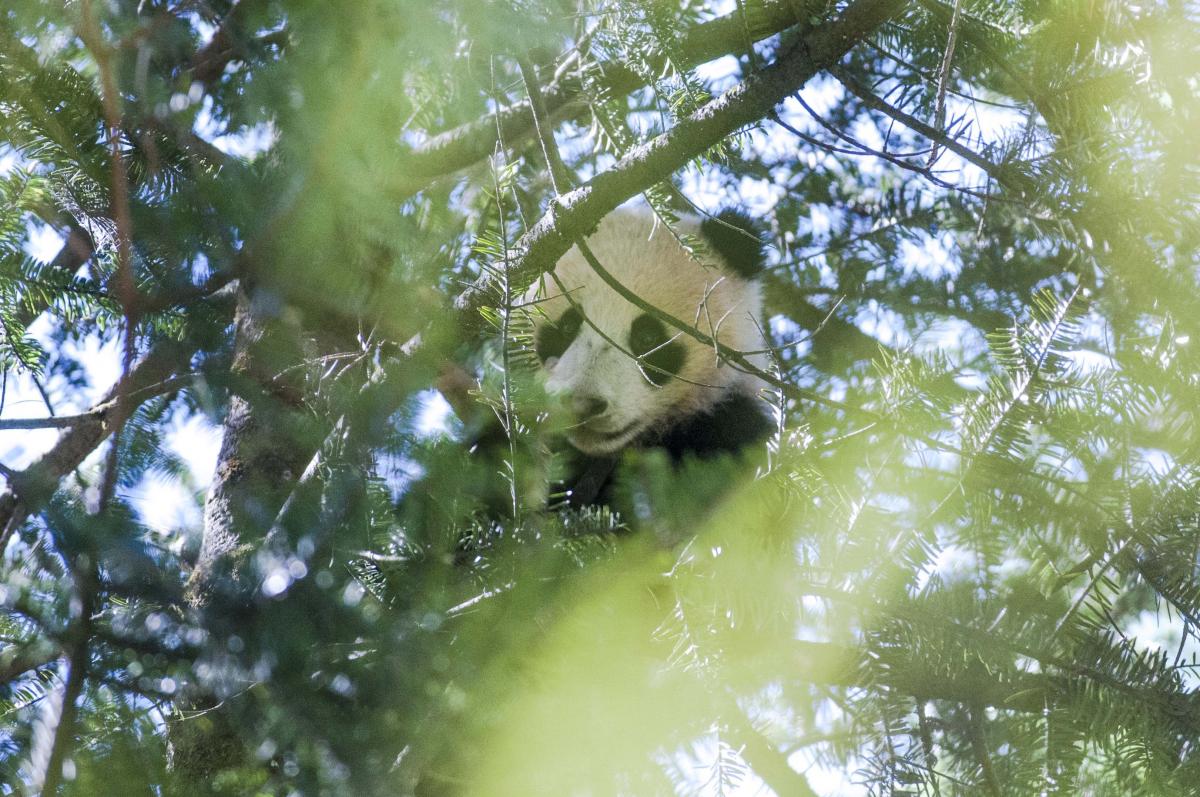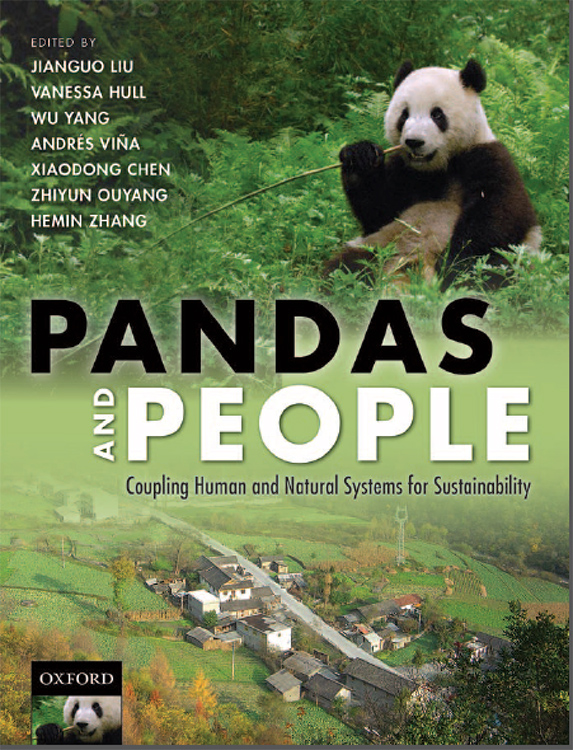Pandas aren’t out of woods yet – forest wisdom still critical
Add Summary

When it comes to understanding how giant pandas pick habitat – a crucial piece of conservation intelligentsia – researchers get a much better picture by watching their whole journey, not just the potty breaks.
Vanessa Hull, a research associate at Michigan State University’s Center for Systems Integration and Sustainability (MSU CSIS) spent two years working in the relatively uncharted waters of tracking wild pandas fitted with GPS collars. In the Sept. 14 edition of the journal PLoS ONE she and colleagues fill in the gaps of understanding how pandas spend their days.
The importance of research that sheds light on what pandas need from their habitat and how they are sharing their land with humans was underscored in early September when their status changed from "endangered" to "vulnerable" on the International Union for Conservation of Nature's Red List.
Since pandas are rare, extremely shy and live in remote, dense forests, it has been difficult to really understand what kind of habitat they prefer because it’s hard to observe them. Following their path by their feces has been one of the main ways of understanding where they are living. But that method has limitations.
understand what kind of habitat they prefer because it’s hard to observe them. Following their path by their feces has been one of the main ways of understanding where they are living. But that method has limitations.
“The scientific community has been making some oversimplifications about how pandas relate to their habitat,” Hull said. “Our results show us that we have been missing things in the past when we just looked at where we were finding feces in the field. When we go out and look for panda feces, this is just giving us one snapshot, but it isn't totally representative of how a panda sees and uses its habitat, especially when you consider that we haven't been able to get to all the areas where pandas go to on foot.“
The panda’s status change was attributed to its habitat improving – especially the improved access to bamboo, which comprises virtually all of the pandas diet. But the MSU researchers note that the findings underscore how important it is to continue to provide robust science to inform policy.
Which forest to protect is crucial to conservation
Knowing which swaths of forest to protect to save the pandas is increasingly crucial. Even in remote corners of China’s Sichuan Province, human development is on the upswing. Roads are being built, which divide up habitat. That’s why it’s so important to know what constitutes land important to panda survival. It will instruct good policy, and effective conservation efforts.
“While efforts in China have increased the panda habitat, human activities are continuing to put pressure on the land people share with the pandas,” said Jianguo “Jack” Liu, Rachel Carson Chair in Sustainability at MSU. “The most efficient and effective way to create policies that allow both nature and people to thrive is to understand how both animals and people are living and what they need.”
The unique privilege of being able to equip five wild pandas with GPS tracking collars from 2010 to 2012 has provided the team with data that show how pandas are moving.
The five pandas – three female, a young female and a male – were captured, collared and tracked from 2010 to 2012, in the Wolong Nature Reserve in southwest China.
Panda preferences can protect places
As the scientists examine the data from this tracking, they’re also able to answer what is it about the habitat within the three to seven square kilometers the pandas wandered that attracts them and makes them stay longer in some places more than others?
Hull said that’s an important question – because not knowing what pandas are drawn to means areas assumed not to be panda-friendly are being turned into tourism sites, or other development.
This analysis shows that pandas are using steep areas and non-forested areas more than thought before. These areas may have other good qualities that pandas are keying in on such as new bamboo growth. They may also be valuable simply because of their proximity to other prime habitat nearby. This realization is important because it suggests that these areas should not be "written off" by scientists and managers as unimportant.
Liu, along with Hull and other colleagues across the world coauthored the book “Pandas and People – Coupling Human and Natural Systems for Sustainability” (Oxford University Press, 2016), which synthesizes two decades of research on the complex ways people and pandas compete and coexist, and how those lessons apply to the rest of the world.
Coupling Human and Natural Systems for Sustainability” (Oxford University Press, 2016), which synthesizes two decades of research on the complex ways people and pandas compete and coexist, and how those lessons apply to the rest of the world.
“We are pleased to have been a part of two-decade efforts that understand human impacts on the panda and help improve panda conservation,” Liu said. “This strong synthesis of many sciences and a partnership with the people who live with and work to protect pandas offer useful insights for global sustainability. We are continuing to expand our collaborative work with Chinese partners on impacts of emerging human activities and climate change to ensure a sustainable future for the panda.”
In addition to Hull and Liu, who is CSIS director, “Habitat Use and Selection by Giant Pandas” was written by Jindong Zhang and Andrés Viña of CSIS; Shiqiang Zhou, Jinyan Huang, Rengui Li, Dian Liu and Hemin Zhang of the China Conservation and Research Center for the Giant Panda in Wolong; and Weihua Xu and Zhiyun Ouyang of the State Key Laboratory of Urban and Regional Ecology, in the Chinese Academy of Sciences.
The research was funded in part by the National Science Foundation, NASA and Michigan AgBioResearch.
Pandas -- Moving Toward Sustainability



 Print
Print Email
Email
